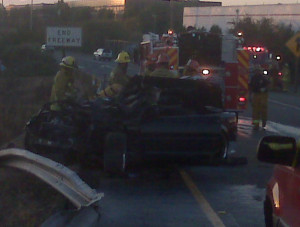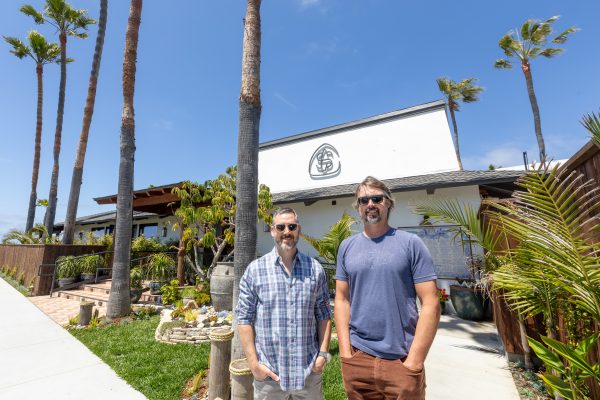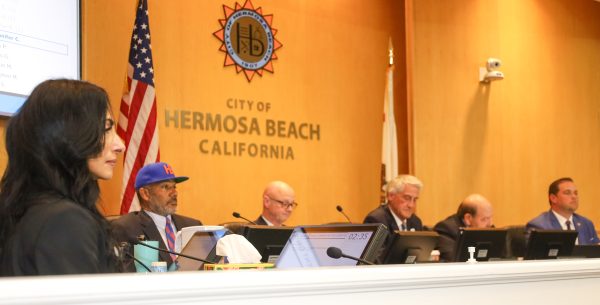 An ordinary morning work commute led Manhattan Beach resident Linda Cunningham to a frightening, but all-too-typical, scene on L.A.’s freeways two years ago.
An ordinary morning work commute led Manhattan Beach resident Linda Cunningham to a frightening, but all-too-typical, scene on L.A.’s freeways two years ago.
While exiting, she pulled up behind a BMW convertible that had crashed into the center median and had smoke pouring out of it. It had been traveling 90 miles per hour upon impact, she later learned.
As she approached, she saw that the broken and twisted guard rail had penetrated the driver’s side window and entered the neck of the driver, a woman in her forties who sat unconscious in the car. Blood gushed from the wound.
The front of the car was smashed so badly, it protruded inward, crushing the woman’s lap. Its collapsed roof pinned down her shoulders, so that even if she had been conscious she would have been unable to get out.
Cunningham had no idea how long the woman had been in this condition and there was no sign of rescue or medical personnel. She later learned that because of the location of the accident — the end of the 90 freeway in Culver City — authorities were unclear about whether rescue efforts fell under city or county jurisdiction.
While they squabbled over which agency should respond, Cunningham, a water utility company employee, decided to respond herself.
“I grabbed my fire extinguisher and first aid kit, which I always keep in my trunk, and ran up to the car,” she said. “I directed the 911 call and then put on my rubber gloves.”
She immediately went to work taking the woman’s vital signs and placed gauze on her neck wound, holding it in place for the 15 minutes it took rescuers to respond.
After several minutes, the injured woman awoke, hysterical and flailing.

“I told her the paramedics were on the way,” Cunningham said. “I told her not to move and tried to keep her calm. I kept asking her questions to get her to talk to me and keep her conscious and coherent.”
When authorities responded, they said that the woman could have been decapitated if Cunningham hadn’t kept her still.
Had the Manhattan Beach resident driven up to this same scene a few years earlier, she would’ve done what most people do when confronted with similar situations.
“I would’ve kind of looked and thought, ‘That’s too bad,’ and then gone about my business,” she said.
A year before, Cunningham, 34, had completed an emergency preparedness course through the city’s Community Emergency Response Program (CERT).
She is one of 175 volunteers in the city who have been trained to respond not only to isolated incidents, such as the accident she assisted in, but also during major disasters, serving as back-up to traditional first responders.
“We’re not doing surgery,” said Cunningham, who has assisted in two other vehicular accidents on her morning route to work. “But we are helping until the real help can come.”
A severe earthquake — such as the “big one” that Californians have dreaded for decades — would most likely overwhelm fire, police and public works departments. At any given time, there are nine firemen on-duty in the city, which has a population of 33,000.
“If a 7.8 earthquake hit, it would take out our infrastructure, gas and electric lines, and water supply,” CERT President George Butts said. “During such a disaster, they will be handling issues that pose the greatest danger to life, like fires and gas breaks. We will all be overwhelmed, but those of us who have been trained will be able to respond where they can’t.”
A diverse group of community members makes up the growing volunteer force, including business owners, housewives, lawyers, writers, engineers, and civic leaders.

Through hands-on classes, CERT volunteers are trained in fire safety, first aid, triage, hazardous materials, terrorist incidents, disaster medical operations, and search and rescue missions. Annual ongoing training is also available and volunteers often provide support at community events, such as Manhattan Beach’s annual 10K run.
“Without a doubt, the most important thing I learned was how to remain calm in a chaotic situation,” said Cunningham.
She recalled panicking when she saw her sister in the throes of an epileptic seizure for the first time as an adult.
“I felt helpless,” Cunningham said. “I didn’t want to feel that loss of control again, which is one of the reasons I signed up for the program.”
L.A. city started the first CERT program in the nation in the early 1980s, modeled after similar disaster preparedness programs in Japan, according to Butts.
In 2003, informal CERT training was offered in Manhattan Beach. By 2008, a group of nine community members that included Butts and Manhattan Beach Fire Battalion Chief Frank Chiella turned it into an official non-profit organization and offered their first class.
“We felt it was important to enhance disaster awareness in our community and train for the big one,” Butts said.
CERT currently offers two courses per year, with each course composed of three classes that typically meet on Saturdays for roughly eight hours each. The last class session includes a simulated disaster drill to put skills into practice.
The cost to volunteers is $50 for training, certification, and a backpack stocked full of first aid materials. The program is partially funded through the city, since fire department personnel are involved in training.
Although currently less than one percent of the city’s population is CERT-trained, Butts said that interest in the program has significantly increased since the Haiti earthquake last month. The program’s goal is to have 10 percent of the city’s residents trained.
The next CERT course, beginning Feb. 27, filled up a month out and there is now a waiting list of over 100 people wanting to be trained. Another course will be offered in the fall.
Due to the high demand, Butts is pushing for funding to add a third class.
“During a major disaster in Southern California, there will be no mutual aid from other cities,” Butts said. “Nobody will come to Manhattan Beach to help because they will be taking care of themselves. Our residents will have to take care of ourselves.”
For more information, call 310-802-5233 or visit www.mbcerta.org. ER











Linda is a life long friend of mine. She is an amazing and caring person. I hope that others, including myself can take this class and help out others in need.
Linda is my sister and has encouraged me to look for similar courses in my community!
Linda Cunningham is an exceptional person. She deserves a tremendous amount of credit and respect for what she does to help people in her community. As well as all the other volunteers who are helping too. Thanks to them we are a very lucky community!!!